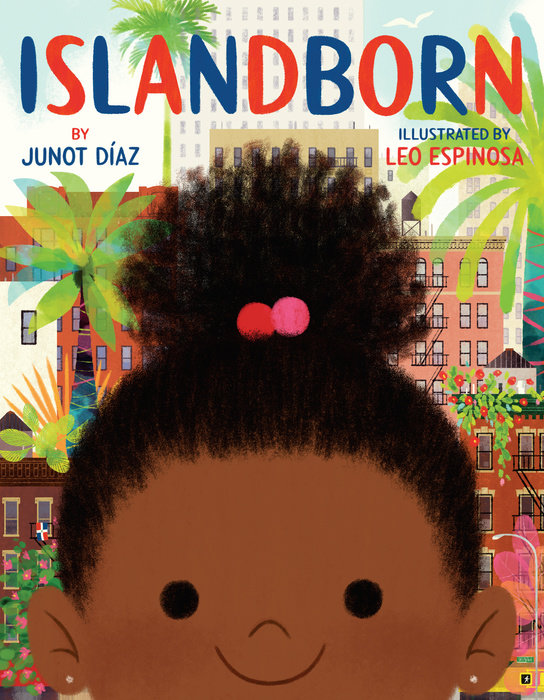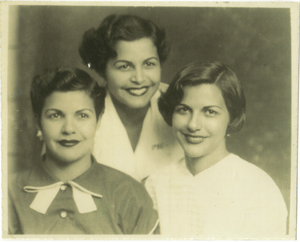 Update: The editorial director at Dial (the publishing house for Islandborn) called the Teaching for Change office on February 6 to say that in response to the concerns surfaced in the article below, a new version of the first edition of the book is being printed. She noted that this decision was made to meet the goal of having a book that affirmed black and brown children throughout and that everyone involved could be proud of.
Update: The editorial director at Dial (the publishing house for Islandborn) called the Teaching for Change office on February 6 to say that in response to the concerns surfaced in the article below, a new version of the first edition of the book is being printed. She noted that this decision was made to meet the goal of having a book that affirmed black and brown children throughout and that everyone involved could be proud of.
We were delighted that Dial Books took the major step, just one month away from the book’s release, of revising the illustrations of the monster throughout the book. We were told this involved destroying tens of thousands of books already in print and issuing a new printing in English and Spanish.
The new version of the book portrays the monster as green rather than black.
Read Full ReviewThe new children’s book Islandborn by Junot Díaz tells the story of a young girl, Lola, who learns from family and friends about the Dominican Republic where she was born. She was brought to the U.S. as a baby, so the stories help paint a picture of life on the island and the forces that led her family to leave such a wonderful place.
At the Teaching for Change office, we’d been looking forward to Islandborn, especially staff member Faye Colon who is Puerto Rican and her husband who is Dominican.
An advance copy of the book arrived this week. Faye dropped everything to read it. She found that Leo Espinosa’s illustrations of people beautifully affirm a range of skin colors and Afro-Latinx identity. This diversity and genuine representation are rare in children’s books.
However, she was dismayed at the illustrations on a page spread towards the end of the book, as were the rest of us when we read the book too. The affirmation of racial identity gets undone when the U.S. backed brutal dictator Rafael Trujillo is pictured as a monstrous black bat in an ominous black sky.


Why give children, one more time, the message that black is bad and scary? Especially when that monster is supposed to represent Trujillo who was light skinned and persecuted countless people, most notoriously those who were black.
The bats throughout the rest of the book (see sample page below) are featured in a myriad of other colors so there were other options.

This is not a critique of the author or illustrator as much as the whole production team and publishing industry that one more time had no one on staff who could see the problem with the representation of black as evil.
In fact, Junot Díaz has been an invaluable voice as an author speaking out against anti-blackness and other forms of oppression. We look forward to his comments on the illustration and hope he continues to write children’s books.
If this book is any indication, Díaz is committed to raising topics in children’s books that are usually reserved for the author’s note on the end pages. By describing the dictator as a monster, he introduces a brutal and essential political history in an age-appropriate way. The book opens the door for conversation with children about the reasons people are forced to leave their home countries. He also points out the beauty of the Dominican Republic — upending the deficit narrative around immigration and highlighting the push factors. It is a Harvest of Empire for young children.

There is one place where we think young readers could handle a more accurate narrative. It is in the description of what happened to the “young women who were heroes who challenged the monster.” Díaz is likely referring to the Mirabal sisters.
When Lola asks what happened to the heroes, she is told, “No one knows really. It was so long ago.” Well, the truth is that we actually do know what happened to the Mirabal sisters and countless others who challenged the Trujillo dictatorship. A response that children could handle would be “Sadly, many were killed but others survived. Their children, like you, continue to work for a better world today.”
We hope these concerns can be addressed before the book is reprinted.
Preorder Islandborn at Powell’s Books.

 Related stories
Related stories
A similar concern was raised in 2017 about The Bad Mood and the Stick. Librarian Edith Campbell published a blog called “I Am Not Your Bad Mood.” The publisher changed the image before the official release of the book.
A critique of My Beautiful Birds led to a response from the publisher, but no change to the representation of blackness as something evil to escape.
The new bat is a dark, scary green. Junot Diaz gave a wonderful booktalk for children this morning (3/15) at Capitol View Library in Washington DC and many copies of the book were shared with local students. Copies in the collection for circulation as well. It’s extraordinary, this book.